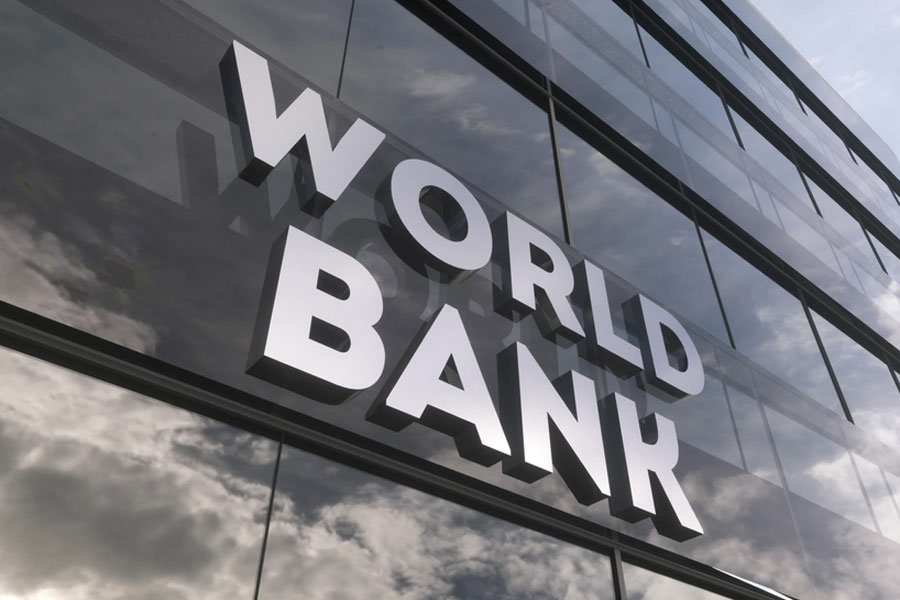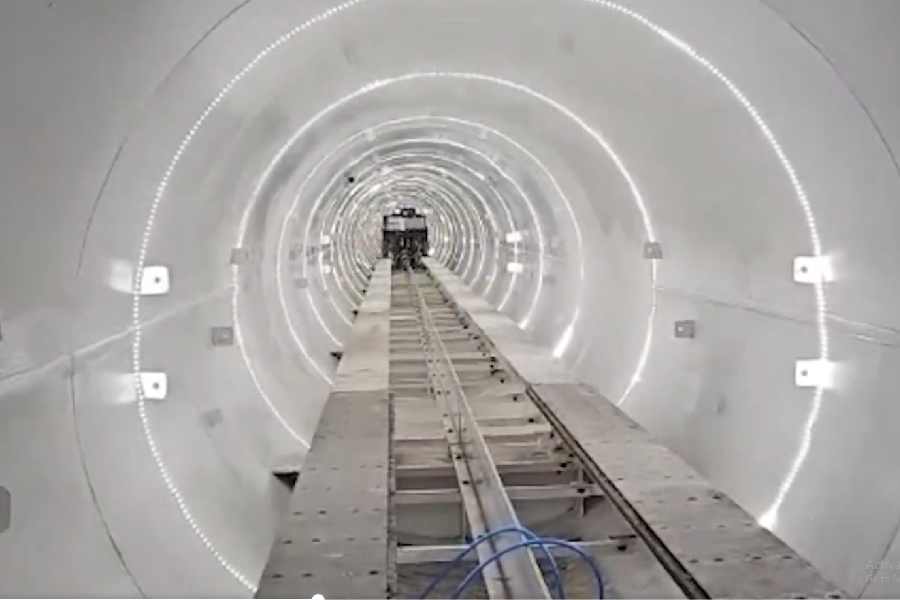 |
| I.G. Patel: one of those who stayed there |
I still remember the address: 30 Pandara Road. It was a modest little apartment, of the D-II type in official parlance, not far from India Gate. The allotment was in the name of B.N. Datar, the senior-most in our gang, who was in the statistics department in what continued to be the Bombay Presidency administration and had just joined the fledgling Planning Commission in its labour and employment division. He shared the Pandara Road flat with K.N. Raj, who too had travelled from Bombay, leaving the research department of the Reserve Bank of India at the invitation of J.J. Anjaria to help him set up the economic division of the Planning Commission. The Pandara Road apartment had two teeny-weeny bedrooms with attached baths and an apology of a corridor connecting the bedrooms with the living room, which was slightly more spacious. Datarji, a widower, loved younger company and was always oozing with the milk of human kindness. Besides, he firmly believed in keeping an open house. Raj, with his natural friendliness, was his ideal flatmate. He had been during the war at the London School of Economics, which was then sheltered in Cambridge and where he got to know I.G. Patel, who was doing the economics tripos at King’s College. The two became great chums. As the war ended, Raj returned home with a piping PhD, had a stint as economic correspondent with a Ceylonese newspaper, soon changed his mind and joined the RBI in Bombay. The RBI’s research outfit was an exciting place, but the idea of getting involved in the planned development of the newly independent nation was much too tempting; therefore onward to Delhi. For the first few months in the Planning Commission, it was playing around with building blocks and mostly learning by doing. A couple of years went by, Anjaria and Raj, between the two of them, finally put together the tome which passed as the country’s first Five Year Plan. It was really a prim collection of a set of goody-goody essays touching on issues having a direct impact on growth, any formal planning exercise did not really proceed much beyond hesitant references to a cluster of hopes and aspirations. The elementary Harrod-Domar formula of growth had just appeared in the academic journals, somewhere in the introductory chapter there was an elliptical acknowledgment of its significance. That was all. Never mind, the prime minister, who was also ex officio chairman of the Planning Commission, was overjoyed; here was another course India was taking in its tryst with a glorious destiny. The prime minister insisted that the Central cabinet must have a thorough awareness of the contents and intents of the nation’s first endeavour with planning. The cabinet secretary was assigned the task of reading out the full text of the plan document to the assembled Central ministers. Going through the text over three days was a grim, boring chore. The ministers were generally indifferent, and often dozing off. Not that there was no interesting interlink. At one point, the cabinet secretary read a sentence from the chapter on food and agriculture, which suggested that in order to have an increase in foodgrains output of such and such a percentage over the Plan period, it would be necessary to have an investment of so many thousand crores of rupees. Rafi Ahmed Kidwai, the food and agriculture minister, took umbrage: food was his portfolio, what business had the Planning Commission in intruding into his sphere. Jawaharlal Nehru, visibly perturbed, spoke a few soothing words and succeeded in calming Kidwai down.
But my story has nothing to do with the Planning Commission, it is all about 30 Pandara Road. Once the first Five Year Plan document was ready and done with, Raj chose to cross over to the Delhi School of Economics to adorn a professorial slot. Almost exactly at the same time, I.G. Patel decided to give up his position with the International Monetary Fund in Washington DC and come home to join the ministry of finance in New Delhi. Nature abhors a vacuum; Raj arranged with Datarji that the bedroom he was vacating at 30 Pandara Road be made ready to receive I.G. So the Datar-Raj household got transformed into the Datar-I.G. establishment. As it happened, I too reached New Delhi, again to join the ministry of finance, within a few days of I.G.’s arrival. The contrast between the two of us could not be any greater. He had a dazzlingly wondrous scholastic career in the crème de la crème of academic institutions in the West, a first-class economic tripos of acclaimed merit at Cambridge, his next hop was a year at Harvard, followed by a PhD again from Cambridge. He had ended up with an assignment with the IMF, where he was the blue-eyed boy of Eddie Bernstein, the supreme boss of the IMF’s research department. He was elegance and sophistication personified. I was a rustic from Dhaka, Banaras and an insignificant European country, with a modest, very short teaching stint at Lucknow. All that apart, I was crude and uncouth in my gait. But some odd chemistry took over. I.G. took an instant liking to me, and I quickly shed most of my inhibitions. We got attached to each other at amazing speed. Both of us were in our late twenties; he was, however, a few years ahead. He knocked off some of my inferiority complexes and with his affectionate indulgence — as well as Datarji’s enthusiastic accord — I became the third member of the 30 Pandara Road clientele. I had a small hutment officially allotted to me at Pataudi House, it soon became an irrelevance.
A den inhabited by a widower and two bachelors tends to gravitate towards bedlam. It was truly an ambiance of laissez passer. Datarji’s coolheaded domestic management, however, kept chaos at bay. The more frequent visitors mostly belonged to two categories: (a) acquaintances of Datarji and Raj whom they had met at the Constitution House hostelry where they were billeted before moving to Pandara Road, and (b) I.G.’s friends, a frighteningly smart set, nearly all from Cambridge, Oxford or Harvard. This one was a Rhodes scholar, that one a physicist from Princeton, a third one a lawyer from Yale. But the depth of their wisdom and intellect they carefully kept under cover by having recourse to a casual-sounding superciliousness. Datarji had visitors of another genre, maybe one or two fairly well known politicians or trade union leaders, or one or two seasoned civil servants with long years of administrative experience. Many of those who dropped in in the evenings worked hard during the day, sometimes some of them would go to work even on Sundays and formal holidays. But at the evening session at Pandara Road they were free birds. Amongst the earliest callers would be Hiten Bhaya, who, we were told, was the first native to be appointed director of armament supply in the Indian navy. His wife, Angela Soares, a bundle of goodness and simple charm, would often load us with luscious Goan food at their Sujan Singh Park apartment. There would be Murli Rao, who was in private business and knew the ins and outs of Delhi’s political goings-on. Murli would often be accompanied by his extraordinarily beautiful wife, Uma. Another couple, invariably present, was Chanchal Sarkar, then with The Statesman, and Latika Sarkar, teaching law at the University of Delhi. Yet another couple turning up every now and then was K.P. Narayanan, then a deputy secretary with the ministry of external affairs, who later became president of the country, and his Burma-born wife, Usha. Jamila and George Varghese, as well as Nilanjana and Subhas Dhar would also be there, but less frequently. Another of I.G.’s Cambridge friends, Mohit Sen, was a bit of a surprise. He was just back in India after spending a couple of years in China on party work. His senior brother, Bundle, was not a regular, but it was sheer delight when he came. Raj, of course, would come over from his university quarter at the Civil Lines, full of ideas, gossip and hilarity. A demure P.N. Dhar would now and then take a ride with Raj; he would watch the proceedings with a hawk’s eye, eat and drink moderately and would rarely open up, but nobody doubted the sharpness of his mind. One or two evenings the party would turn a little more boisterous when Dharma and Lavaraj Kumar would visit from Bombay, or it would be K.S. Krishnaswamy. On the other hand, M.N. Srinivas’s presence would reduce the level of levity, his ‘Sanskritization’ theory was then making waves and increased the social distance between him and his erstwhile friends.
We would on occasion have houseguests, for instance, Datarji’s brother-in-law, P.B. Gajendragadkar, who later became chief justice of India. Or my teacher and I.G.’s future father-in-law, A.K. Dasgupta, would travel from Banaras. The guests would perhaps have felt a bit cramped during their stay, but they must have also appreciated the care and respect showered upon them, in the process, also deriving some entertainment, if not enlightenment, from the intense flow of debates and polemics indulged in by the young crowd.
There were, though, other visitors, scores of them. Governance in free India in that early phase had not yet been rendered into a frozen mould, experiments and innovations were still not suspect categories. The country’s foray into economic planning attracted foreign scholars and diplomats. Once in Delhi, for several of them, 30 Pandara Road was a must address to call on, both for the attractive food and homeliness it served and, simultaneously, the scintillating conversations replete with information, insight and humour which added to the stock of awareness of visiting foreigners, much more than drab sessions in government offices could.
The few days Sachin Chaudhuri would fly in from Bombay were special. He would put up with Tagore’s granddaughter, Nandita, and her husband, Krishna Kripalani. During the day he went round the ministries and had solemn discussions with ministers and senior civil servants over affairs of the world or this or that seemingly intractable national issues. But he would also have time to look up a timid junior researcher hiding in an obscure corner of a dingy office room, who had sent a most interesting piece which the Economic Weekly had published with much care and pride. Come late evening, Sachin Chaudhuri would lord over the proceedings at the 30 Pandara Road premises which would jostle with gatecrashers as news had spread about his being in town. Commitments to write for him were a by-product of the evening’s often high-pitched, always scintillating, dialogues and conversations.
Six decades have gone by, and yet one cannot but feel amazed at the names of the steady stream of callers; particularly of foreign academics, at 30 Pandara Road in that period. The ideological divide among economists got obliterated at that address. Allow me to unload my recollections: Joan Robinson, John Kenneth Galbraith, Nicky Kaldor and his wife, Clarisse, Oskar Lange, Michal Kalecki, Paul Baran, Abba Lerner, even Milton Friedman. And I must not forget Shigeto Tsuru either, or Charles Bettelheim, or, it goes without saying, Alice and Daniel Thorner. Even before Nikita Khrushchev had delivered his speech at the 20th party congress, a number of planners from the Soviet Union had started visiting the Planning Commission and, as a matter of course, 30 Pandara Road. They would talk little but, never mind, smile a lot and learn more about this country and its ways than what they were able to gather from trudging from one government office to the next.
Perhaps there is a bit more when talking about this Pandara Road fraternity. In the evenings, when they were not working in office or pontificating about high economics or getting drunk in parties, they would troop together to watch a Balasaraswati recital or rush to one of those rarest performances by Bade Ghulam Ali Khan; Hitchcock’s Rear Window had just been released at the Rivoli: they would ensure enough seats for themselves and friends for an evening show. Or they were bound to be there when Calcutta’s Bohurupee troupe stunned everyone with their ethereal production of Tagore’s Raktakarabi. The dingy 30 Pandara Road apartment, in a way, epitomised the promise and the confidence India held out at that particular juncture.
It did not last. Friends were summoned for other assignments which took them away from Delhi. Or they developed diverse interests; some of them got married and had to adjust their week’s schedule. Ideological disparities too reared their heads. Finally, Datarji moved to a bigger apartment. I do not even have the heart to enquire whether that flat still exists or has been devoured by a high-rise.











